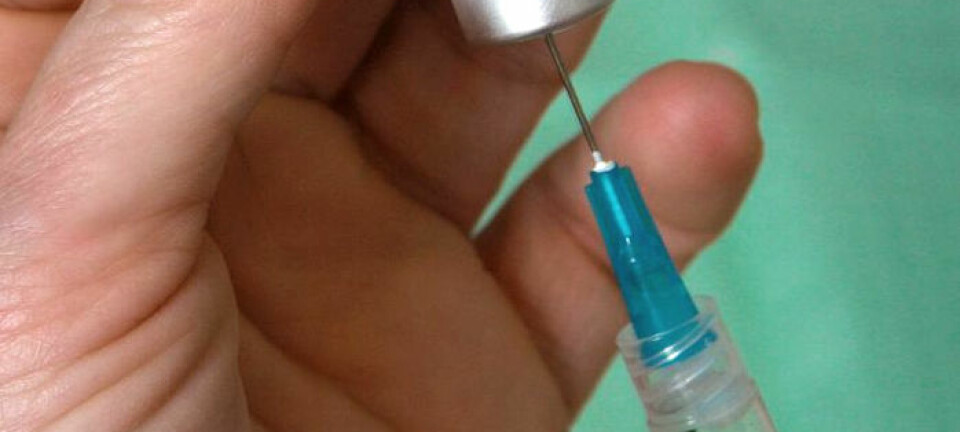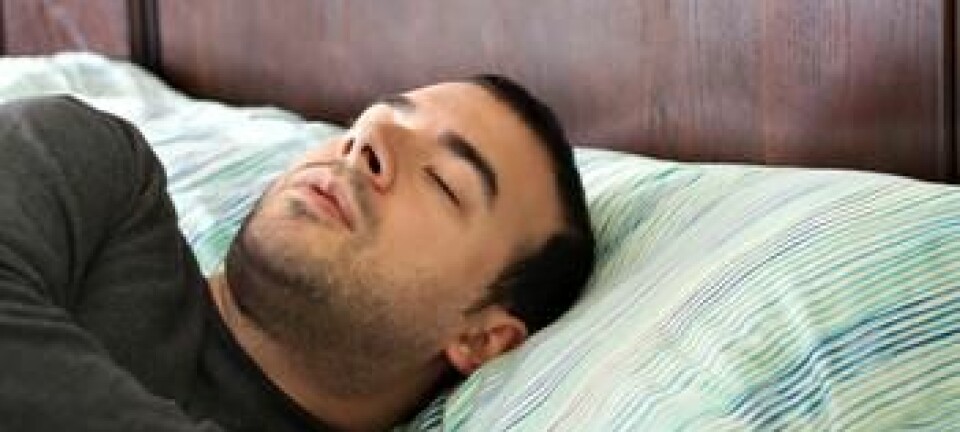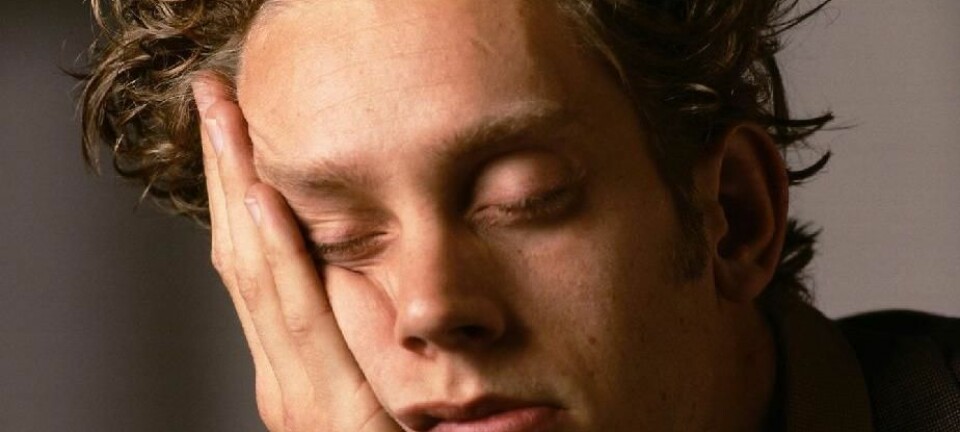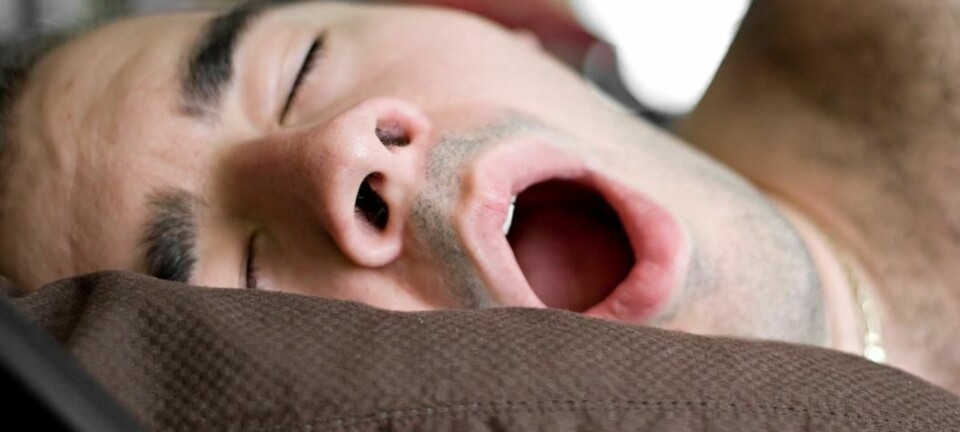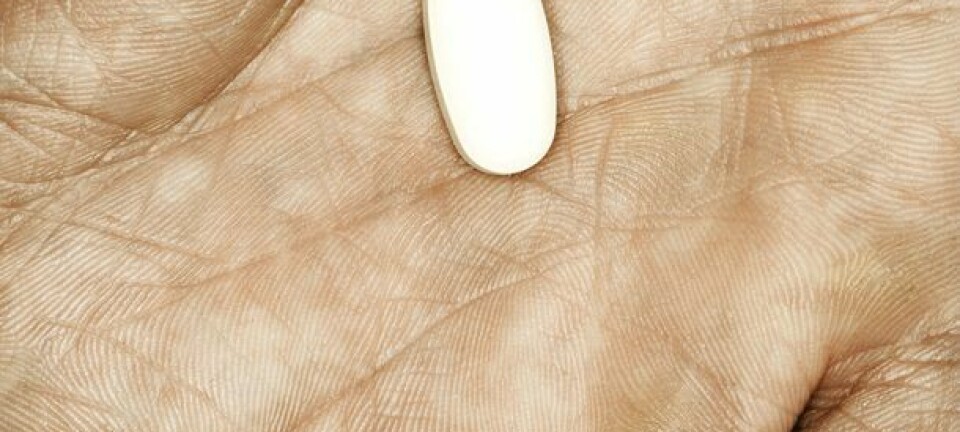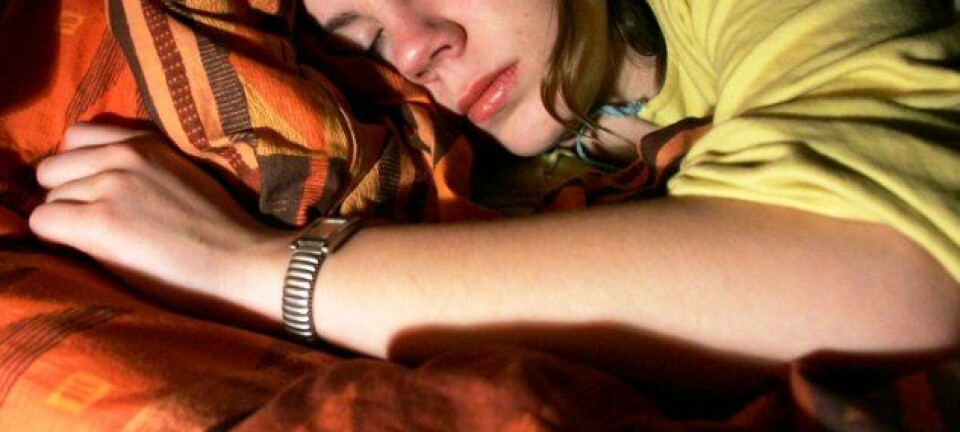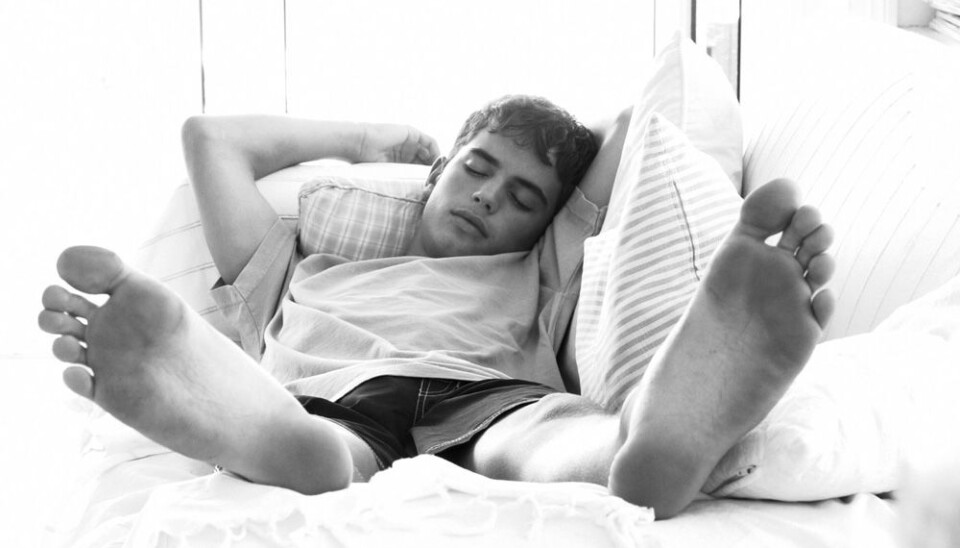
Teens need more sleep, but don't sleep enough
Adolescents know they should be sleeping more than they do. Teens in a recent study said they sleep two hours less than they feel they should on weekdays.
Denne artikkelen er over ti år gammel og kan inneholde utdatert informasjon.
The gap between the actual hours of sleep they get and the amount of slumber Norwegian teens think they should be getting on weekdays is starting to grow.
A recent study with more than 10,000 participants showed that young people aged 16-19 sleep an average of 6 hours and 25 minutes on weekdays.
At the same time, the teens told a coalition of researchers from Bergen that they felt they needed to sleep an average of 8 hours and 35 minutes.
Many teens also spend a great deal of time trying to fall asleep and struggle with insomnia.
Hard to extend hours asleep
The study's findings that teens average about 6.5 hours of sleep on weekdays is shorter than what has been found by most other studies of teens in this age group.
“The results tell us that teens are conscious of their need for plenty of sleep, but get too little nevertheless,” said Mari Hysing, a postdoc affiliated with Uni Helse in Bergen, a department of the research firm Uni Research.
Hysing was in charge of the sleep disorder study in cooperation with researchers from the Norwegian Institute of Public Health and the University of Bergen. The participants were youths from Norway’s Hordaland County.
Hysing said that the study showed researchers that teens can't simply flip a switch to sleep more.
“Adults can’t just tell them to sleep more. They already know they should. But the teens have a hard time increasing the number of hours they sleep,” she said.
Unhealthy shifts in day-night rhythms
A lack of hours in dreamland on school days is one of the reasons that teens shift their day and night rhythm so drastically on weekends ― by 4.5 hours, the study found.
The researchers said that for teens get the recommended amount of sleep, which is 8-9 hours a night, they should be going to bed at 10 PM, or 22:00.
On weekdays, however, the average teen in the study went to bed at 23:18. Split by gender, the average was 23:56 for boys and 23:10 for girls.
Hysing recognizes that it would be hard in today’s world to get teens to hit the hay at 22:00, but points out the drawbacks.
“It would readily be perceived as authoritarian," to order teens to go to bed early, she said. "But a grossly shifted sleep rhythm on the weekends is unhealthy.”
“If youths could go to bed a little earlier than they do now, and halved the disparity in their day/night rhythm during the weekends to just two hours, I think it would help a lot,” she says.
One way to do this would be if teens didn't sleep so late on Sunday mornings, which would make them more tired on Sunday night, Hysing said.
Long time to fall asleep
Teens stay awake much later on weekends, on average to about a quarter past one (01:13). They figure that they can sleep in on Saturdays and Sundays, so they go to bed about four-and-a-half hours later on Fridays and Saturdays.
Sleeping in on weekends makes young adults think they are making up for some of their sleep deficit, so they will be able to start the week on Monday well-rested. However, previous research has shown that our capacity to make up for lost sleep is quite limited.
“Sleep researchers like us think that the considerable shifts in circadian rhythm on weekends actually make kids more enervated on weekday mornings,” Hysing said.
“The result is often that they spend more time falling asleep. Many report that it’s particularly hard to fall asleep on Sunday evening,” she says.
The new Norwegian study shows that teens generally spend a lot of time lying in bed before they can doze off.
On weekdays it takes teens an average of 47 minutes to fall asleep, which is twice as long as times found in earlier studies.
Worries, and new technology
The new study doesn't specifically examine the reasons behind the difficulties that teens have falling asleep. But Hysing says that researchers know from previous studies that girls in their teens generally have more trouble falling asleep than boys in their age group.
“They have more worries and often have more symptoms of depression,” she says.
Another factor is all of the new technological gadgets we have at our disposal, and the use of mobile phones, tablets and PCs in bed, or during the hours just before hitting the sack.
“We will be paying a closer look at the role played by use of technology, but we are fairly certain that it has a negative impact on the amount that youths sleep,” Hysing says.
The researchers found that the percentage of teens who suffered from insomnia ranged from 13.6 percent to 23.8 percent, depending on how stringently the diagnosis was defined.
A public health issue
Researchers think that the sleep problems they’ve uncovered in their study are considerable enough to be called a public health problem.
“A recent government white paper on public health claims that insomnia and sleep disorders comprise one of the major health challenges in the population,” says Hysing.
The white paper describes sleep disorders as a strong health risk that later can lead workers to drop out of the workforce. People with sleeping disorders run a higher risk of developing mental and physical health conditions, Hysing points out.
“If we are going to find ways to prevent these problems, we need a better understanding of the issues that affect and lead to sleep disorders, and on the impact the lack of sleep has on learning problems and absences from school,” she said.
---------------------
Read the Norwegian version of this article at forsknign.no
Translated by: Glenn Ostling







